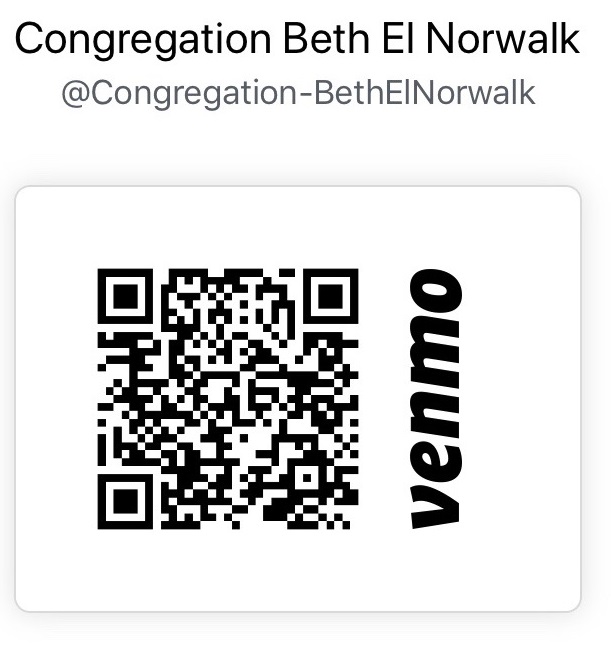Our Story
Our Story
In 1934, our founders introduced into Norwalk the youngest movement in Judaism, a Conservative Congregation. It was a bold idea at the time, but one which was being implemented in other communities throughout the country where Jews, long tied to Orthodox synagogues and traditions, felt that the time had come to adapt religious practices to a changing society.
At the very outset, the founders determined that, in spite of the limited funds available, hiring a full time rabbi was essential-and Rabbi Maurice Lazowick was engaged. A very learned lay member of the Congregation, David Feldman of Westport, was convinced to serve as the temporary cantor; he remained as Baal Koray for over 40 years.
In addition to hiring a rabbi, the Congregation realized early on that a religious school was absolutely vital and, by 1938 (when the 161 members who made up the Conservative Congregation were each assessed $15 for dues), the school was established. The newly formed Sisterhood organized fundraising, adult education classes, and methods of fostering Jewish tradition in the home. And, in a beautiful ceremony, Jeannette and Sam Finkelstein presented the first Sefer Torah.
In the early 1940s, Rabbi Benjamin Tumim took over the religious leadership of the Congregation which was meeting at the Norwalk Jewish Center. The young men of the community went off to war while, at home, the philosophy of the synagogue was strengthened and reorganized to conform more closely with the practices and teachings of the great conservative leader, Solomon Schechter, and the Jewish Theological Seminary.
Like the veterans returning after World War II, who were faced with the problem of inadequate housing for their families, the Conservative Congregation also sought to move out from the quarters they had shared with their relatives, the Norwalk Jewish Center. A building drive began in 1947 and, after much discussion; the site on East Avenue was purchased. During that same year, Samuel Schwartz was heartily approved as our new rabbi, and we officially changed our name to Congregation Beth El.
On May 9, 1948, five days before the establishment of the State of Israel, ground was broken for the new building. A year later, the first two wings were dedicated-classrooms for the religious school and an auditorium. Four years later, in 1952, the Congregation occupied the third and primary component, the Sanctuary, which was erected behind the connecting corridor. This completed the original complex as well as the dreams of the small founding group that had labored for years to provide a proper synagogue-home for their fellow congregants, a place where they could practice within the guidelines of the ever developing Conservative movement.
In 1965, women were admitted to the Board of Trustees with full voting privileges. By 1973, along with voting privileges, the United Synagogue decreed that women were full-fledged Jews and had full praying privileges as well. Women would now be counted as part of a minyan and could be honored with an aliyah.
During the 60s, other changes took place at Beth El as well. Land was purchased for a Congregational cemetery on Richards Avenue in West Norwalk. Zera Kodesh Congregation became affiliated with Congregation Beth El in a move that consolidated the Conservative organizations in Norwalk. The Minyanaires expanded their breakfast menu, enticing many who would not have ordinarily come to morning services to share the pleasure of daily prayer.
In 1969, Rabbi Schwartz retired and the gratitude of the Congregation for his many years of exemplary rabbinic guidance was expressed in a gala farewell celebration. Rabbi Schwartz was replaced by Rabbi Donald Crain who was with us for three years. Rabbi Jonas Goldberg arrived shortly after.
In December 1980, Congregation Beth El made history when we hired Cantor Deborah Katchko-Zimmerman to be only the second woman cantor in the history of the Conservative movement. The occasion was not without its own first-Debbie's mother, Rita Katchko, was hired as our new organist to complete the first daughter-mother team of its kind anywhere. Soon after Cantor Debbie started, she instituted a new feature at Friday evening services-the once-a-month sing-alongs, regularly attracting over 200 people on a Friday evening. Late in 1981, Congregation Beth El introduced another innovation-the Katan program. Open to all three and four year old Jewish children in the community, the program has had a major impact in attracting new members since its inception.
In 1990, we welcomed Rabbi William Marder as our new spiritual leader. The 90s also saw the first woman President of Congregation Beth El, Barbara Hennes, followed by Ellen Wasserman who served an unprecedented three terms as President.
In 2001, Rabbi Joseph Ron Fish was welcomed to our Congregation. His installation was attended by the Mayor, Congressmen, all of the area's rabbis (representing Orthodox, Conservative, and Reform congregations) as well as other dignitaries. The Priestly Blessing was delivered by Rabbi's father, Rabbi Judah Fish. This very memorable and emotional moment was witnessed by all those who filled the sanctuary to overflowing.
The new millennium with our young rabbi has brought a renewed vitality and vigor to our Congregation. We have welcomed many new families which include many young children. As we watch these children during services and other events, we see our future ...and we are very proud.
In 2015, Rabbi Ita Paskind was welcomed to our Congregation. She is the first woman rabbi in our 80 years. We are excited to have her as our Spiritual Leader and look forward to building on our legacy.
Since 1934, we have had 42 Congregation Presidents, 8 Rabbis and 7 Cantors-all most able individuals, who have contributed to our illustrious history. We have also been blessed with many members, past and present, who have worked arduously in the service of the synagogue. Their contributions are greatly appreciated.
Tue, April 16 2024
8 Nisan 5784
Pay or Donate to Beth El via Venmo!!!

Contact Us
Email: Click HERE
Phone: 203-838-2710

